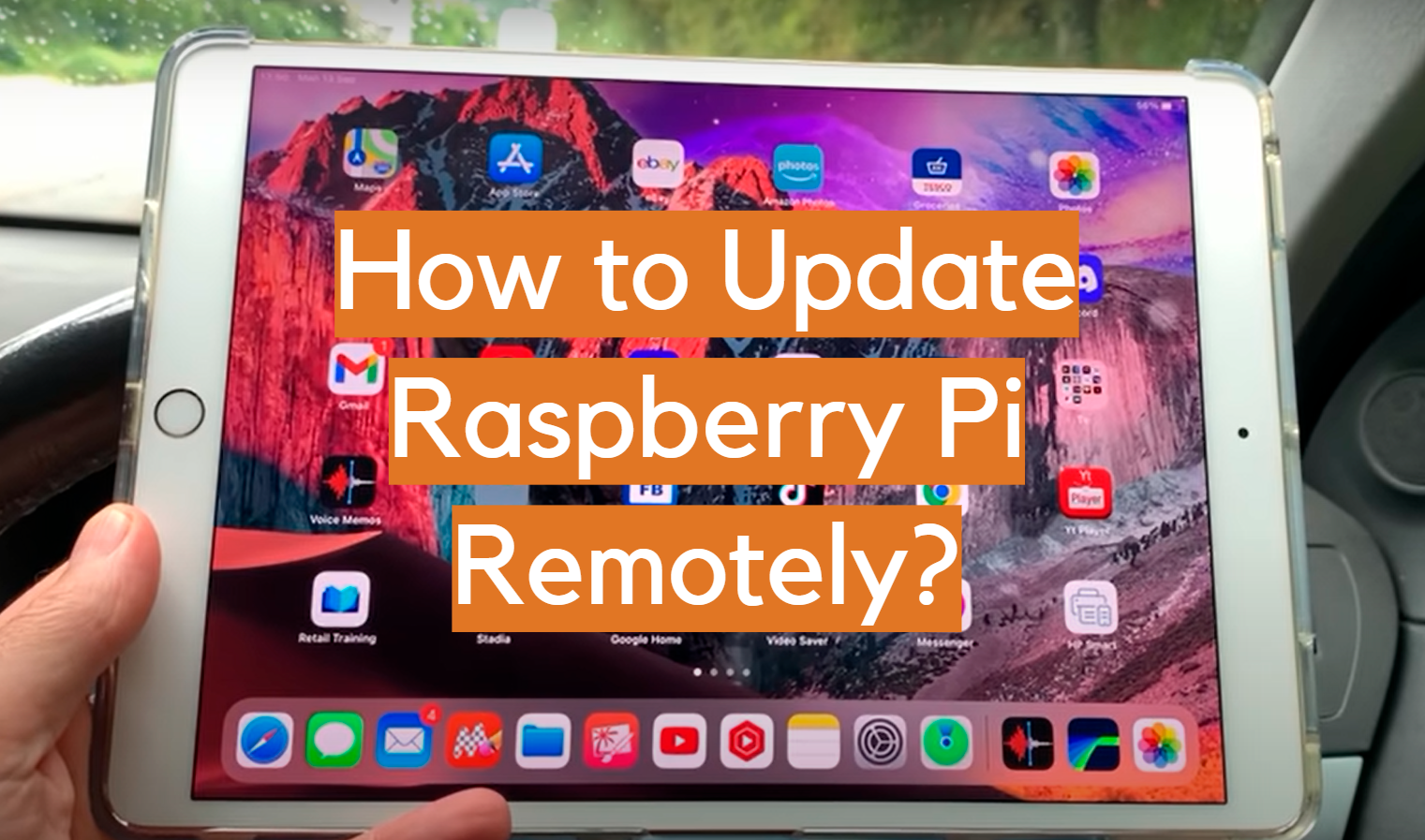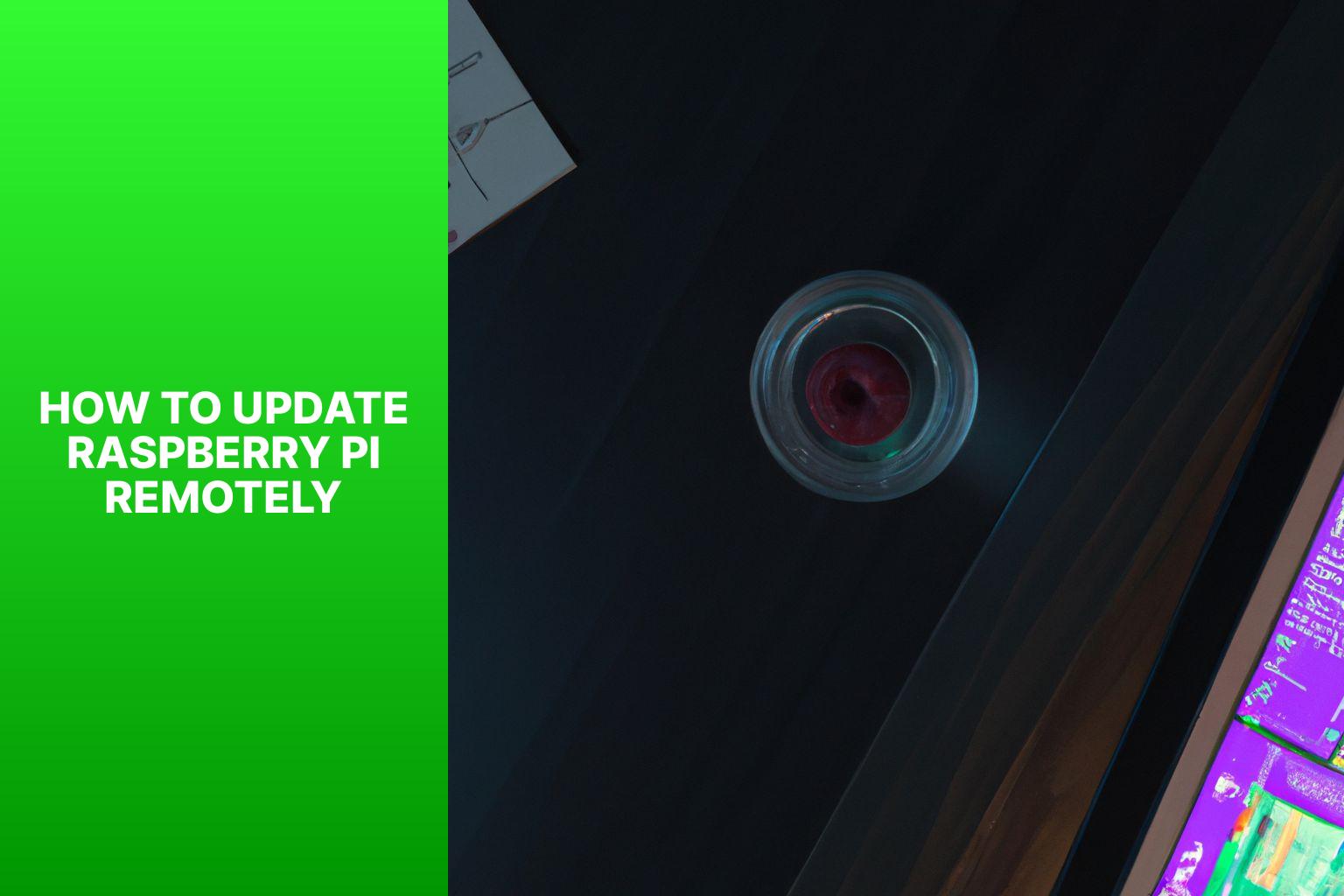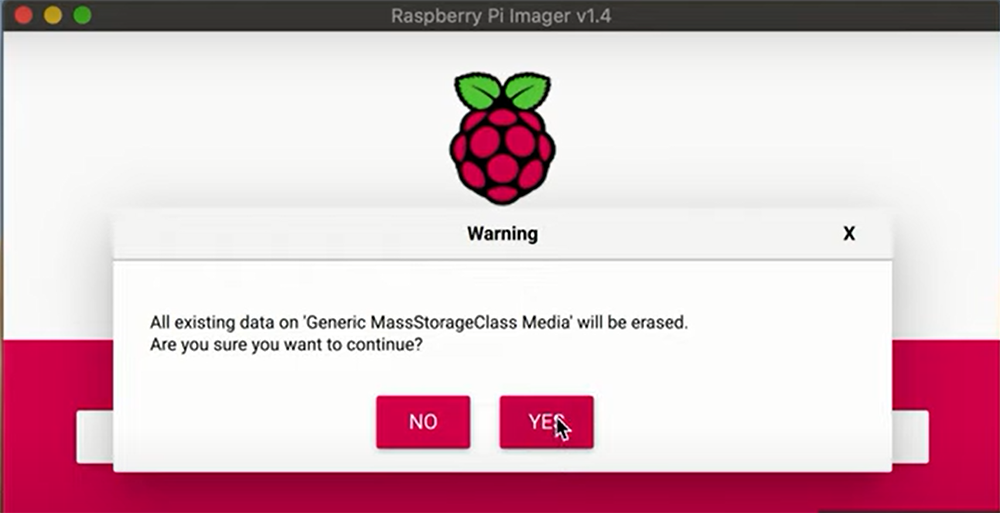Ever felt chained to your desk just to manage a tiny computer? Remote management of Raspberry Pi devices is not just a luxury anymore; it's a necessity for efficient operation and timely updates.
The Raspberry Pi, a marvel of compact computing, has found its way into countless applications, from home automation and media servers to sophisticated industrial control systems. However, the challenge often lies in maintaining and updating these devices, especially when they are deployed in remote or inaccessible locations. This article delves into the methods and tools available for remotely updating and managing your Raspberry Pi, ensuring your projects stay current and secure, no matter where they are.
| Category | Information |
|---|---|
| Name | Raspberry Pi |
| Type | Single-board computer |
| Developer | Raspberry Pi Foundation |
| Primary Use Cases | Education, IoT, Robotics, Home Automation, Media Centers |
| Operating Systems | Raspberry Pi OS (formerly Raspbian), Ubuntu, Windows IoT Core, etc. |
| Official Website | Raspberry Pi Foundation |
| Remote Management Methods | SSH, VNC, Remote.it, Raspberry Pi Connect, Ansible, OTA Updates |
| Typical Update Procedures | apt update && apt upgrade, Custom scripts, Image-based updates |
| Security Considerations | Strong passwords, Firewall configuration, Regular security updates |
| Hardware Variants | Raspberry Pi Zero, Raspberry Pi 3, Raspberry Pi 4, Raspberry Pi 5, Raspberry Pi Pico |
One of the most fundamental methods for interacting with a Raspberry Pi remotely is through SSH (Secure Shell). If you have a remote RPi4, running 32armhf Raspian on an SD card, connected via ethernet to the internet, and possess full root SSH access, you already hold a key to a world of remote possibilities. SSH provides a secure command-line interface, allowing you to execute commands, transfer files, and configure the system as if you were directly connected. For example, updating the operating system involves executing commands like sudo apt update and sudo apt upgrade. However, relying solely on SSH for updates can be tedious, especially when managing multiple devices.
For a more graphical experience, consider using VNC (Virtual Network Computing). With a VNC server running on your Raspberry Pi, you can remotely connect to its desktop environment from a host machine. This setup is particularly useful for managing your Raspberry Pi without needing a dedicated monitor, keyboard, or mouse. To connect to your Raspberry Pi remotely using VNC, open the VNC viewer program on your host machine and enter the Raspberry Pi's IP address. This method is ideal for tasks that require a visual interface, such as configuring software or troubleshooting graphical applications. Accessing your Windows desktop remotely from a Raspberry Pi is also possible with VNC clients available on the Raspberry Pi.
Beyond basic remote access, several tools and platforms are designed specifically for remote management of Raspberry Pi devices. Remote.it, for example, allows you to access a Raspberry Pi remotely without the complexities of port forwarding. This is especially beneficial when dealing with dynamic IP addresses or restrictive network configurations. Similarly, Raspberry Pi Connect provides a user-friendly interface for remotely controlling your Raspberry Pi through a web browser. To remotely manage your Raspberry Pi using this software, simply go to the connect web interface by entering the provided URL in your favorite web browser. These tools abstract away much of the technical complexity, making remote management more accessible to a wider range of users.
Over-the-Air (OTA) updates represent a more sophisticated approach to remote management, particularly relevant in IoT deployments. Remote OTA updates for IoT devices and Raspberry Pi are crucial as IoT technology constantly evolves. Vendors frequently release fixes and updates to the software, device controllers, or firmware. Therefore, IT administrators must plan for them. OTA updates enable you to deploy updates to multiple devices simultaneously, ensuring consistency and reducing the need for manual intervention. The core of the update commands are defined in the runme.sh script, which you provide each time in the update zip. These updates can include software patches, new features, or even entire operating system upgrades. Implementing OTA updates requires careful planning and robust infrastructure, but the long-term benefits in terms of efficiency and scalability are substantial.
The process of updating a Raspberry Pi OS to Raspberry Pi 4, or soon to Raspberry Pi 5, is generally a straightforward process. But before starting the update, ensure you have a stable internet connection. However, there are nuances to consider depending on the specific model and operating system version. For instance, this tutorial used a Raspberry Pi 3 with the Yocto Project version Hardknott 3.3.1, but other devices and versions exist. When transitioning between major operating system versions, such as from Raspbian Wheezy to Jessie, or from Jessie to later versions, a complete re-imaging of the SD card might be necessary. This ensures a clean and stable upgrade, avoiding potential compatibility issues.
For those managing a fleet of Raspberry Pis, tools like Ansible can significantly streamline the update process. Imagine a scenario where you have 135 Raspberry Pis deployed throughout your company. Almost all of them are setup identically, with the exception of one file. What you would like to do, is find a way that you can push updates to them all at once, from a master image that you maintain. Ansible allows you to define configurations and update procedures in a centralized playbook, which can then be applied to multiple devices simultaneously. This approach greatly reduces the administrative overhead and ensures consistency across your entire infrastructure. Our current method involves using SSH and Ansible.
Security is paramount when managing devices remotely. Any time you open external ports to the internet, there is an element of risk, so please act accordingly. Always use strong passwords for SSH and VNC access, and consider implementing two-factor authentication for added security. Regularly update the operating system and software to patch any known vulnerabilities. Firewall configuration is also crucial to limit access to only necessary ports and services. By implementing robust security measures, you can minimize the risk of unauthorized access and protect your Raspberry Pi devices from potential threats. \u2022 Use login username for pi \u2022 Use either hostname (with DNS server), or, \u2022 Use WAN IP address \u2022 Enter password when prompted notes: Port forwarding \/ WAN IP use covered in the Setting up a server on the Raspberry Pi video (vid640).
Beyond software updates, remote management also extends to hardware considerations. For example, if you are running out of GPIO pins and/or need to read analog values, you might need to remotely configure additional hardware interfaces. In cases where physical access is limited, careful planning is essential to ensure that the hardware configuration supports remote management capabilities. If youre using a Raspberry Pi Pico and struggling to find if it's possible to update your script remotely (and cannot use either SWD or USB), youll need to explore alternative methods. Currently, if your new firmware (can be .uf2, .bin, or .hex file) is stocked in your Pico in the form of an array that you remotely sent, you'd need a way to update the Pico just by sending the file remotely.
The ability to remotely access the desktop environment of a Raspberry Pi is a powerful tool for both administration and application development. Raspberry Pi remote desktop software allows you to access and control your Raspberry Pi device from a different computer or mobile device as if you were sitting directly in front of it. This setup is particularly useful for managing your Raspberry Pi without needing a dedicated monitor, keyboard, or mouse. There are several ways to achieve this, including using VNC servers like TightVNC or RealVNC. Accessing your Raspberry Pi remotely using RealVNC is another popular option. These solutions provide a seamless graphical interface, allowing you to interact with your Raspberry Pi as if it were a local machine.
In certain scenarios, you might need to transfer files to or from your Raspberry Pi remotely. To copy a file named myfile.txt from your personal computer to a users home folder on your Raspberry Pi, run the following command from the directory containing myfile.txt, replacing the [username] placeholder with the username you use to log in to your Raspberry Pi and the [ipaddress] placeholder with your Raspberry Pis IP address. Tools like scp (Secure Copy) make this process secure and efficient. For example, to copy a file named `myfile.txt` from your personal computer to a users home folder on your Raspberry Pi, run the following command from the directory containing `myfile.txt`, replacing the placeholder with the username you use to log in to your Raspberry Pi and the placeholder with your Raspberry Pis IP address. This is crucial for deploying new software, transferring configuration files, or backing up data.
The Raspberry Pis versatility extends to various display outputs. The HDMI output on a Raspberry Pi Zero, or Raspberry Pi model 1, 2, or 3; or the HDMI0 output on a Raspberry Pi 4, 5, or 400; the HDMI1 output on flagship models since Raspberry Pi 4B, compute modules since CM4 (including CM4S), and keyboard models; and the Raspberry Pi Touch Display or Raspberry Pi Touch Display 2, all provide options for connecting to displays. While remote management often eliminates the need for a physical display, understanding the display capabilities is essential for troubleshooting display-related issues remotely. For instance, if a remote user reports a display problem, you can use SSH to remotely configure the display settings and diagnose the issue.
We use a Raspberry Pi embedded computer to connect IP cameras on a customer's network to our cloud-based recording service. We are using Raspbian, and about 50% are Wheezy and 50% are Jessie. The challenge we have is how to remotely update the software running on these IFUs. The ability to update your Plex Media Server on Raspberry Pi starting from a Windows desktop is a specific example. To do this, connect to your Plex server from a web browser (e.g., 10.0.0.200:32400, where this is your IP for the server), then click on the settings icon in the top right of the display. Regular updates ensure you have the latest features and security patches.
In this tutorial, were taking a look at remote.it to set up a work network using Raspberry Pi as a remote access gateway. With remote.it, you can access a Raspberry Pi remotely without port forwarding, simplifying the process and enhancing security. This is particularly useful for scenarios where you need to access devices behind a firewall or NAT.
Before configuring any services, its essential to ensure your Raspberry Pi operating system is up-to-date. This reduces the risk of security vulnerabilities and ensures compatibility with the latest software. Regular updates are crucial for maintaining a stable and secure system. There are also 5 easy ways to connect Raspberry Pi remotely, each offering different advantages and disadvantages. Accessing your Raspberry Pi desktop remotely with TightVNC is just one of the options.
In conclusion, remotely updating and managing a Raspberry Pi requires a multifaceted approach, combining tools like SSH, VNC, and specialized platforms like Remote.it and Ansible. By prioritizing security, automating updates, and understanding the nuances of different hardware and software configurations, you can effectively manage your Raspberry Pi devices from anywhere in the world.



Detail Author:
- Name : Jany Yundt
- Username : nicklaus13
- Email : marina.harris@yahoo.com
- Birthdate : 1982-11-13
- Address : 523 Dietrich Roads Suite 329 Kunzefurt, UT 86419-1126
- Phone : +1.443.336.5552
- Company : Reichert Group
- Job : Railroad Inspector
- Bio : Libero enim et reiciendis excepturi quia eos. Maiores a laboriosam et quos maxime aut ea. Nostrum unde sunt officia maxime facere assumenda quaerat.
Socials
linkedin:
- url : https://linkedin.com/in/ressie.jacobson
- username : ressie.jacobson
- bio : Est vero mollitia voluptatem vitae aut quam.
- followers : 4372
- following : 987
twitter:
- url : https://twitter.com/rjacobson
- username : rjacobson
- bio : Mollitia voluptas et ut distinctio. In nulla a et earum fugit iusto accusamus. Enim qui aut distinctio dolores. Sequi doloribus unde labore.
- followers : 1622
- following : 1145
facebook:
- url : https://facebook.com/ressie4000
- username : ressie4000
- bio : Fugiat labore corporis alias. Et accusamus voluptatibus magni laborum.
- followers : 2514
- following : 1309